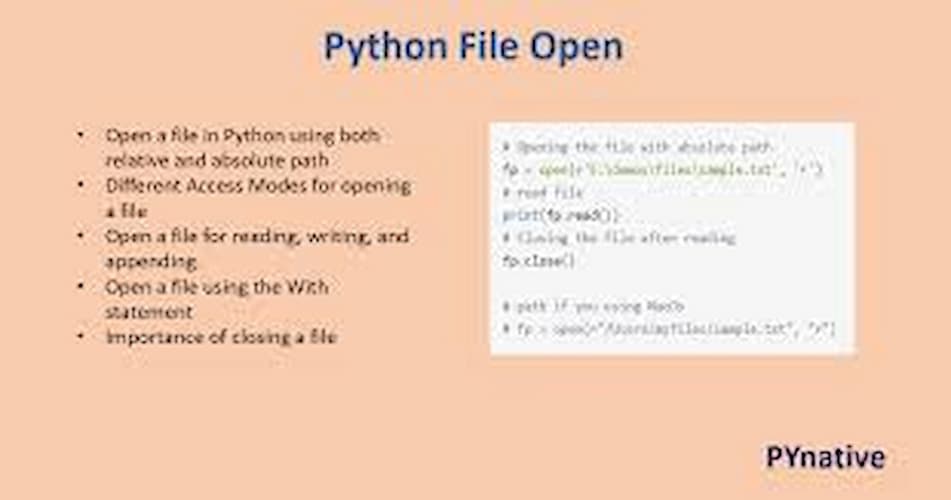Python is a versatile programming language that makes it easy to work with files. Whether you need to read data from a file or write data to it, Python provides a straightforward way to handle file operations. In this guide, we’ll walk you through the essential steps to open a file in Python and perform various file operations.
Understanding File Handling in Python
File handling is a crucial aspect of programming, allowing you to read from and write to files. Python’s built-in open() function makes file handling simple and efficient. The open() function takes two parameters: the file name and the mode. The mode specifies the operation you want to perform on the file, such as reading or writing.
Different Modes for Opening Files
Here are the different modes you can use with the open() function:
- ‘r’: Read (default mode). Opens the file for reading. If the file does not exist, it raises an error.
- ‘w’: Write. Opens the file for writing. If the file does not exist, it creates a new one. If the file exists, it truncates the file.
- ‘a’: Append. Opens the file for appending. If the file does not exist, it creates a new one.
- ‘r+’: Read and write. Opens the file for both reading and writing.
Opening a File in Python

To open a file in Python, you use the open() function. Here is a simple example:
python
file = open("example.txt", "r")
In this example, example.txt is the file name, and 'r' is the mode, indicating that the file is opened for reading. After opening the file, you can perform various operations like reading, writing, or appending data.
Reading from a File
Once you have opened a file, you can read its content using methods like read(), readline(), and readlines():
- read():python
content = file.read() print(content)Theread()method reads the entire content of the file and returns it as a string. - readline():python
line = file.readline() print(line)Thereadline()method reads a single line from the file. - readlines():python
lines = file.readlines() for line in lines: print(line)Thereadlines()method reads all the lines from the file and returns them as a list of strings.
Writing to a File
To write data to a file, you use the write() or writelines() methods. Make sure to open the file in write ('w'), append ('a'), or read and write ('r+') mode:
- write():python
file = open("example.txt", "w") file.write("Hello, World!") file.close()Thewrite()method writes the specified string to the file. - writelines():python
file = open("example.txt", "w") lines = ["Hello, World!\n", "Welcome to Python file handling.\n"] file.writelines(lines) file.close()Thewritelines()method writes a list of strings to the file.
Closing a File
It’s essential to close a file after performing any operations to free up system resources. You can close a file using the close() method:
python
file.close()
Using the ‘with’ Statement
Python provides a more efficient way to handle files using the with statement. This approach ensures that the file is properly closed after its suite finishes, even if an exception is raised:
python
with open("example.txt", "r") as file:
content = file.read()
print(content)
In this example, the file is automatically closed when the block inside the with statement is exited.
Conclusion
File handling is a fundamental skill for any Python programmer. By understanding how to open, read, write, and close files, you can manage data effectively and build more robust applications. Remember to choose the appropriate mode for your file operations and always close the file to avoid potential issues.
Whether you’re processing text files, logs, or any other type of data, Python’s file handling capabilities will make your tasks easier and more efficient.